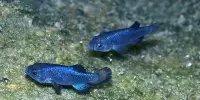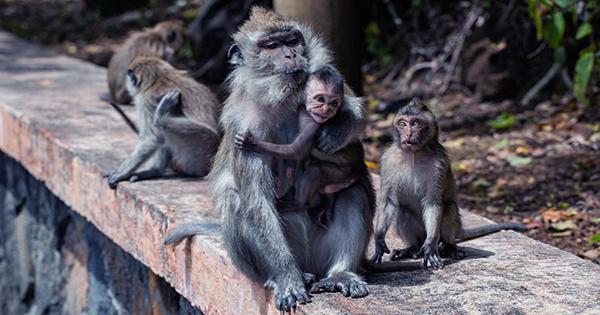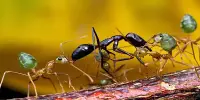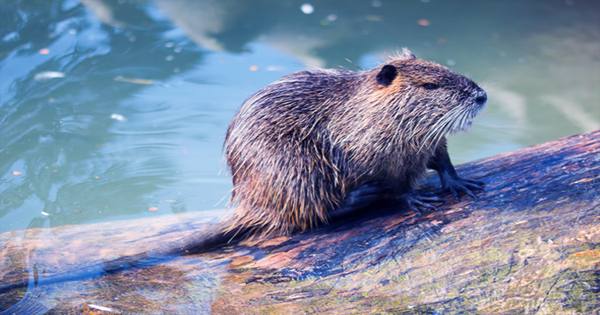The humpback whale (Megaptera novaeangliae) is a species of baleen whale found in oceans around the world. They are known for their distinctive long pectoral fins, which can reach up to one-third of their body length, as well as their acrobatic displays such as breaching and tail slapping.
Reduced krill supplies are linked to fewer humpback whale pregnancies, according to a collaborative research led by researchers at the University of California, Santa Cruz. This result may have significant ramifications for commercial krill fishing.
The study, published January 15 (2023) in Global Change Biology, is based on eight years of data on humpback whale pregnancies (2013 to 2020) in waters along the Western Antarctic Peninsula, where krill fishing is concentrated.
The year before to a humpback pregnancy is critical for krill availability because females need to develop their energy reserves to support the approaching pregnancy. In 2017, following a year with an abundance of krill, 86% of the humpback females sampled were expecting. However only 29% of humpback females were carrying children in 2020, following a year with less krill.
Lead author Logan Pallin, a postdoctoral researcher in the Ocean Sciences Department at UC Santa Cruz, said the study demonstrates for the first time the link between population growth and krill availability in Antarctic whales.
“This is significant because until now, it was thought that krill were essentially an unlimited food source for whales in the Antarctic,” said Pallin, who earned his Ph.D. in ecology and evolutionary biology at UCSC while working on this study. “Continued warming and increased fishing along the Western Antarctic Peninsula, which continue to reduce krill stocks, will likely impact this humpback whale population and other krill predators in the region.”
Krill are not an inexhaustible resource, and there is a growing overlap between industrial krill fishing and whales feeding at the same time. Humpback whales feed in the Antarctic for a handful of months a year to fuel their annual energetic needs for migration that spans thousands of kilometers. We need to tread carefully and protect this unique part of the world, which will benefit whales across their entire range.
Ari Friedlaender
“This information is critical as we can now be proactive about managing how, when, and how much krill is taken from the Antarctic Peninsula,” he added. “In years of poor krill recruitment, we should not compound this by removing krill from critical foraging areas for baleen whales.”
Coauthor Ari Friedlaender, professor of ocean sciences at UC Santa Cruz, said the Western Antarctic Peninsula is experiencing some of the fastest climatic warming of any region on the planet. During the 1950s, winter air temperatures have increased dramatically, and the length of the sea ice each year has decreased by an average of 80 days.
“Krill supplies vary depending on the amount of sea ice because juvenile krill feed on algae growing on sea ice and also rely on the ice for shelter,” Friedlaender said. “In years with less sea ice in the winter, fewer juvenile krill survive to the following year. The impacts of climate change and likely the krill fishery are contributing to a decrease in humpback whale reproductive rates in years with less krill available for whales.”
Coauthor Chris Johnson, the global lead of the World Wide Fund for Nature’s Protecting Whales & Dolphins Initiative, said this research shows that highly precautionary management measures are needed to protect all Antarctic marine life that depends on krill for its survival, including blue, fin, humpback, minke, and southern right whales, as well as other krill predators such as penguins, seabirds, seals, and fish.
“Krill are not an inexhaustible resource, and there is a growing overlap between industrial krill fishing and whales feeding at the same time,” Johnson said. “Humpback whales feed in the Antarctic for a handful of months a year to fuel their annual energetic needs for migration that spans thousands of kilometers. We need to tread carefully and protect this unique part of the world, which will benefit whales across their entire range.”
Humpback whales are migratory animals, traveling long distances between their feeding and breeding grounds. They feed on krill and small fish by using their baleen plates to filter the water.
Humpback whales are considered a vulnerable species due to hunting and other human activities, but their populations have been recovering in recent years thanks to conservation efforts.
Pallin and Friedlaender collaborated on this research with coauthors from multiple national and international universities, NGOs, non-profits, and government agencies. The National Science Foundation, National Geographic Society, and Sea Mammal Commission all contributed to the funding for this project.
















